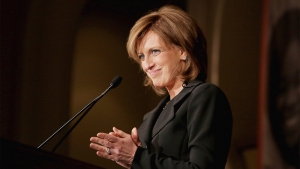In honor of this year’s International Women’s Day, we’re bringing awareness to women’s role in the labor force and gender-related problems present in the workplace.
Did you know that even though there was an increase of women pursuing higher education globally, there’s still a gender gap in employment rates among highly educated individuals? Women represent only 38.8% of all participants in the labor force, which could in part be explained by the unpaid caregiving responsibilities that prevent real employment opportunities. This work disproportionally falls to women due to socially constructed gender-roles.
Also, according to the United Nations, women serve as Heads of State or Government in only 22 countries, and 119 countries have never had a woman leader. In addition, only 25% of all national parliamentarians are women, even though there is established and growing evidence that women’s leadership in political decision-making processes improves them. At the current rate of progress, gender parity in national legislative bodies will not be achieved before 2063.
Issues women often experience in the workplace include:
- Microaggressions (tone policing, sexist language or jokes, mansplaining, victim-blaming, gaslighting, etc);
- Micromanagement (working “under a microscope”);
- Harassment & Bullying;
- Made to feel invisible, inferior, overlooked, ignored and alone;
- Lack of support from management or HR;
- Forced to be quiet or to accept double standards, for fear of termination;
- Not getting equal pay as men in same role;
- Individual ideas/ comments/ opinions/ feedback/ recommendations not supported or welcomed;
- Lack of career pathways.
Although these problems may occur in any occupation women are in, they are far more profound in male-dominated industries such as IT, construction and mining, engineering, armed forces, transportation and sports, among others.
More often than not, they don’t get support from their administration, so they end up either:
- distancing themselves from co-workers;
- accepting masculine cultural norms and acting like “one of the boys,” which magnifies the problem by contributing to the normalization of this culture;
- or leaving the industry.
So what can we do to improve equality in the workplace?
- Understanding the issues for better support – no effective solution can be implemented if those in charge don’t fully comprehend the problems women are facing;
- Not shying away from discussing uncomfortable topics – speak up against harmful behavior, avoiding sensitive conversations won’t help find the change women need;
- Hold people accountable – women are often discredited because of stereotypes and the common sexist “harmless jokes” do more damage than people think;
- Build trust and invest in a safe environment for all – it’s important to cultivate a support system and invest in team-building activities, workshops or awareness campaigns;
- Listen to women and take real action – if you find yourself in a leadership position, thoroughly investigate all complaints of harassment and take appropriate action instead of ignoring, concealing or denying serious accusations;
To all the young women that are reading this, remember to always do your best. Be confident in your abilities, don’t be afraid of challenging the norms and show everyone what you’re capable of.
“Define success on your own terms, achieve it by your own rules and build a life you’re proud to live”

Anne Sweeney, Disney Media Networks Co-Chair and Disney/ABC Television Group President
Happy International Women’s Day.



